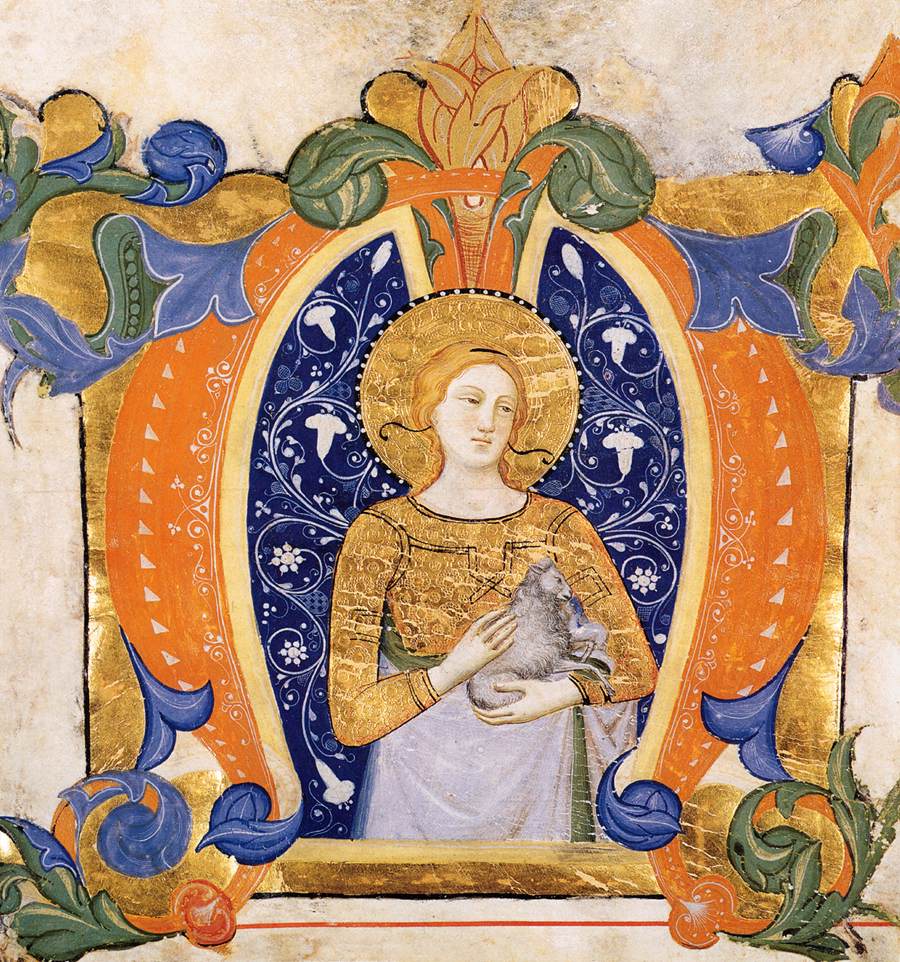By Anne Leader
Today, 21 January, is the feast day of St. Agnes, celebrated on the anniversary of her martyrdom in 304. Like many early martyrs, Agnes was a member of a noble Roman family who practiced Christianity even though it was illegal. She chose a life of chastity — her name derives from the Greek word for chaste — which angered the many Roman suitors who found her attractive. Furious with her lack of interest in them and resolute dedication to a virgin life, these spurned young men reported her to the authorities as a Christian. Her attribute is the lamb, another play on her name (agnus in Latin), a reference to her virginal innocence, and perhaps also as a reference to Jesus, the sacrificial lamb of God.
Domenichino, Saint Agnes, c. 1620, oil on canvas, Royal Collection, Windsor
Ercole Ferrata, St Agnes on the Pyre, 1660-64, marble, over life-size
Sant’Agnese in Agone, Rome
Fra Angelico, Coronation of the Virgin (detail), 1434-35, tempera on panel
Musée du Louvre, Paris
Don Silvestro dei Gherarducci, Gradual from Santa Maria degli Angeli (Folio 32v), c. 1370, tempera and gold on parchment, Bibliothèque Publique et Universitaire, Geneva
Zanobi Strozzi, Gradual, 1448-49, manuscript, Museo di San Marco, Florence





